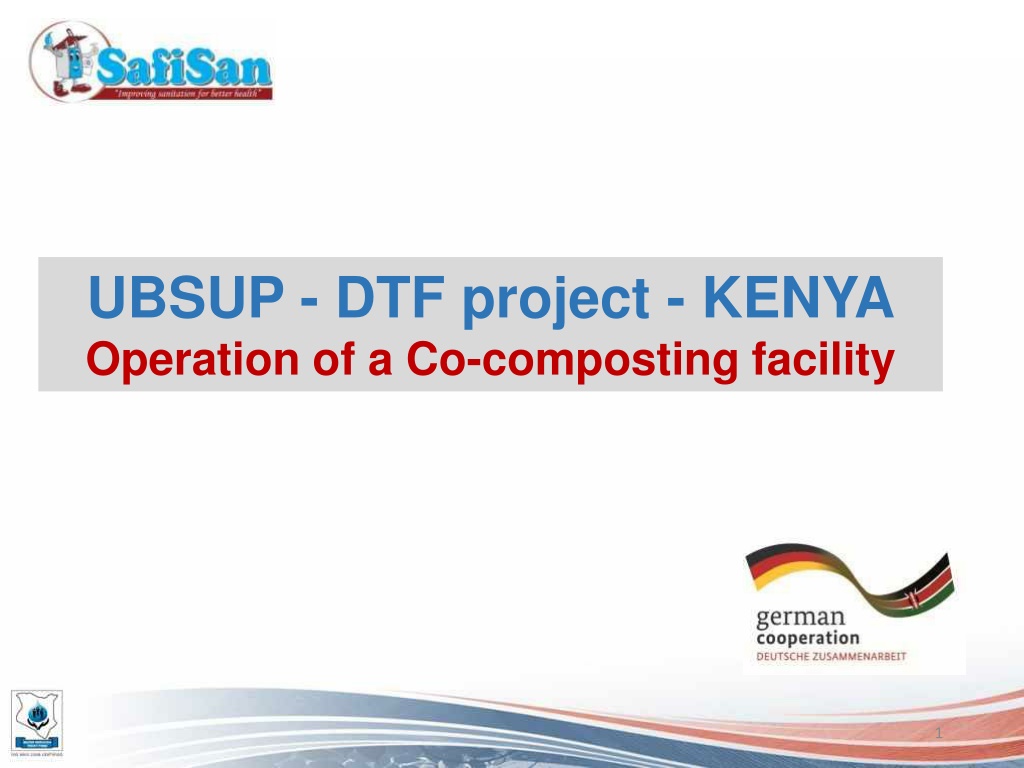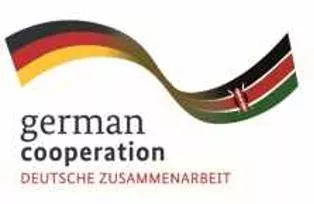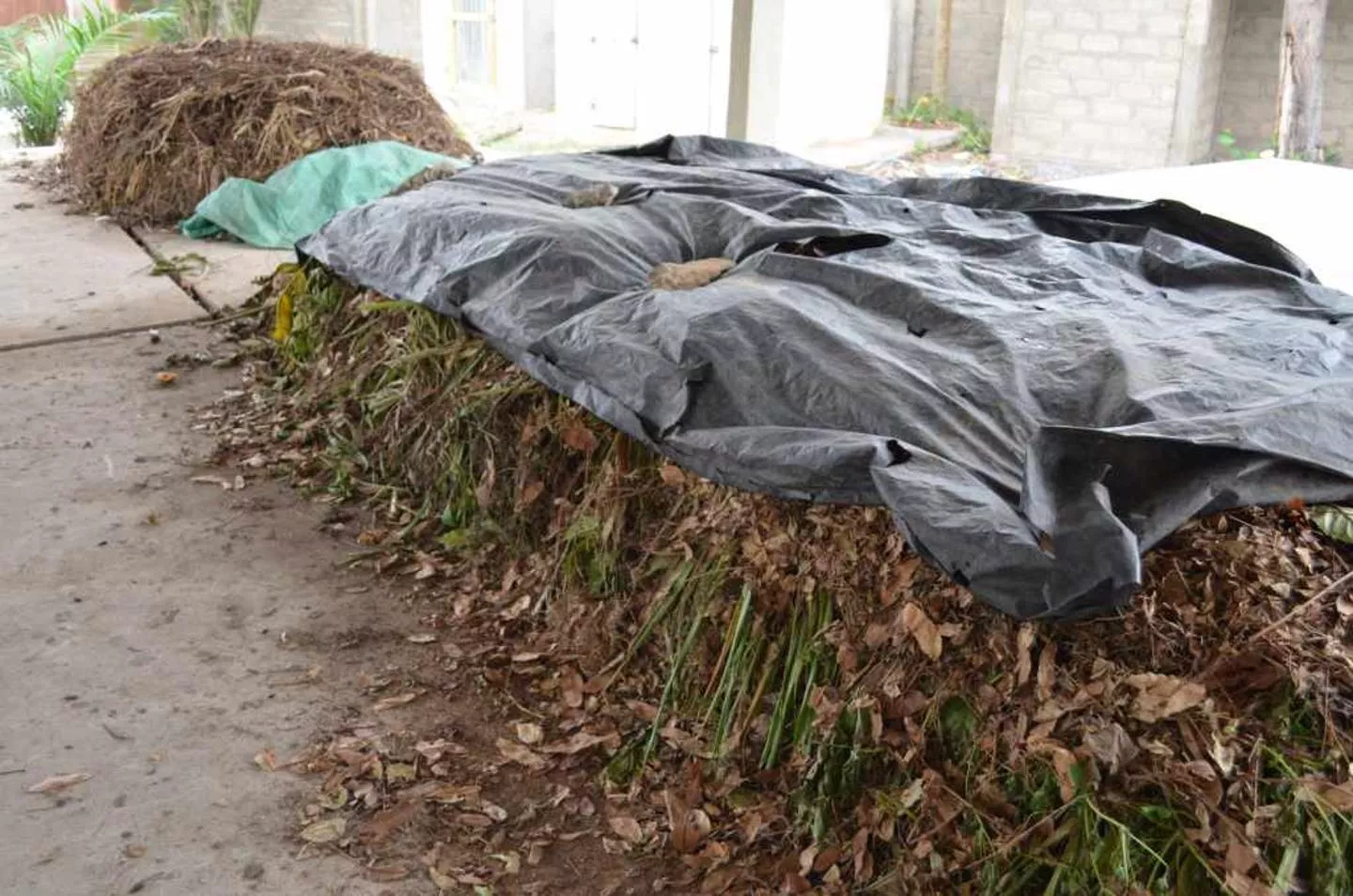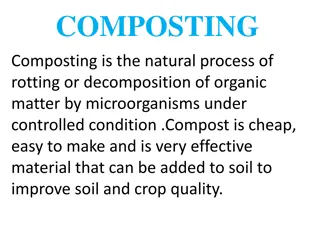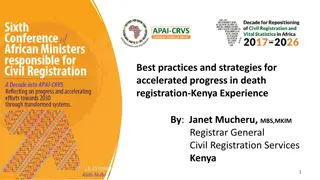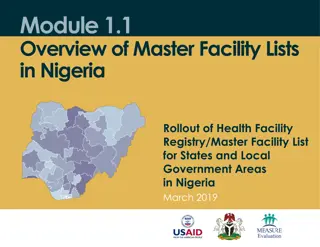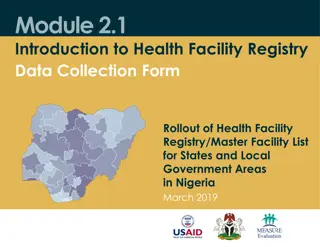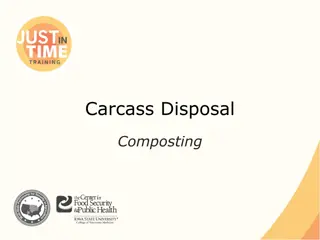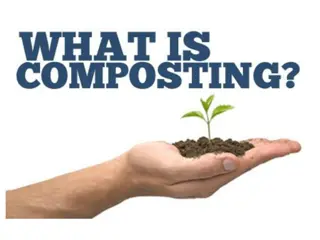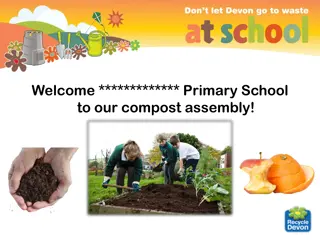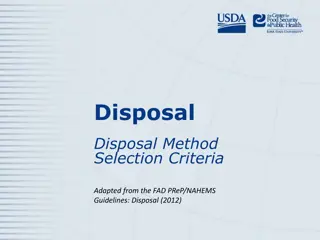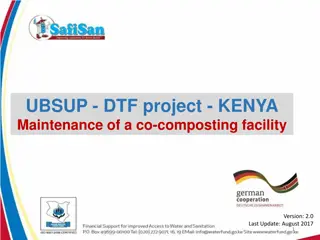Guide to Operating a Co-composting Facility in Kenya
Explore the operations of a co-composting facility in Kenya through detailed images and descriptions. Learn about the areas within the co-composting shed, materials required, composition of windrows, and the process of turning windrows in the co-composting project. Discover the ideal combinations of green and brown waste, nitrogen and carbon content, and the importance of maintaining the right moisture levels.
Download Presentation

Please find below an Image/Link to download the presentation.
The content on the website is provided AS IS for your information and personal use only. It may not be sold, licensed, or shared on other websites without obtaining consent from the author. Download presentation by click this link. If you encounter any issues during the download, it is possible that the publisher has removed the file from their server.
E N D
Presentation Transcript
UBSUP - DTF project - KENYA Operation of a Co-composting facility 1
Keywords User s guide page 4 3
Co-composting shed User s guide page 4 3 Areas of 2 chambers each: Area 1: offload and storage of raw material (waste and UDDT waste) and storage of mature compost Area 2 and 3: co- composting process. 2 windrows maximum 4
Co-composting shed in Oloolaiser 5
Material for co-composting User s guide page 5 and 6 NO YES 7
Composition of a windrow User s guide page 7 and 8 N = Nitrogen C = Carbon Nitrogen and Carbon is food for micro-organisms 8
Green waste Co-composting project in Benin 9
Brown waste Co-composting project in Benin 10
Composition of a windrow User s guide page 7 and 8 Dimension: Length: 3m ; Width: 2.5m ; Height: 1.6m Consecutive layers: 1. UDDT matter and screening residue (2 cm) 2. Brown waste (10 cm) 3. Green waste (5 cm) Ideal combination to be determined by YOU (trials and errors) Too wet: add more brown waste Too dry: add more green waste 11
Windrow layers Co-composting project in Benin 12
Windrow turning User s guide page 9 and 10 Co-composting process: 3 months Turning Air supply Favour growth of micro- organism Prevent odours Turning schedule to be determined by YOU (trial and errors) Recommendation: 3 to 6 turnings in total 13
Windrow turning Co-composting project in Benin 14
Evolution of a windrow: moisture and temperature User s guide page 11 and 13 Moisture content between 40 to 60% all throughout Temperature must not exceed 70 C because it prevents microbiological activities. Week 0 to 1: around 65 C favour rapid composting and kill weed seeds, insect larvae and pathogens Week 1 to 7: gradual decrease from 65 C to ambient temperature Week 7 to 12: stabilization at ambient temperature 15
Maturation process User s guide page 14 Last turning: day 50th Colour Dark brown (soil like) Temperature below 50 C Small insects and fungus (white stains) necessary to break down complex organic material 16
Mature compost Co-composting project in Benin 17
Screening / storage and bagging User s guide page 15 Mature compost is screened onto the sieve (5 to 10mm mesh size) Screening residue used to make a new windrow Fine compost is stored in bulks or bags before selling. Compost cannot be stored in bags more than 1 year (risk of dry-out) 18
Screening Co-composting project in Benin 19
Bagging Co-composting project in Benin 20
